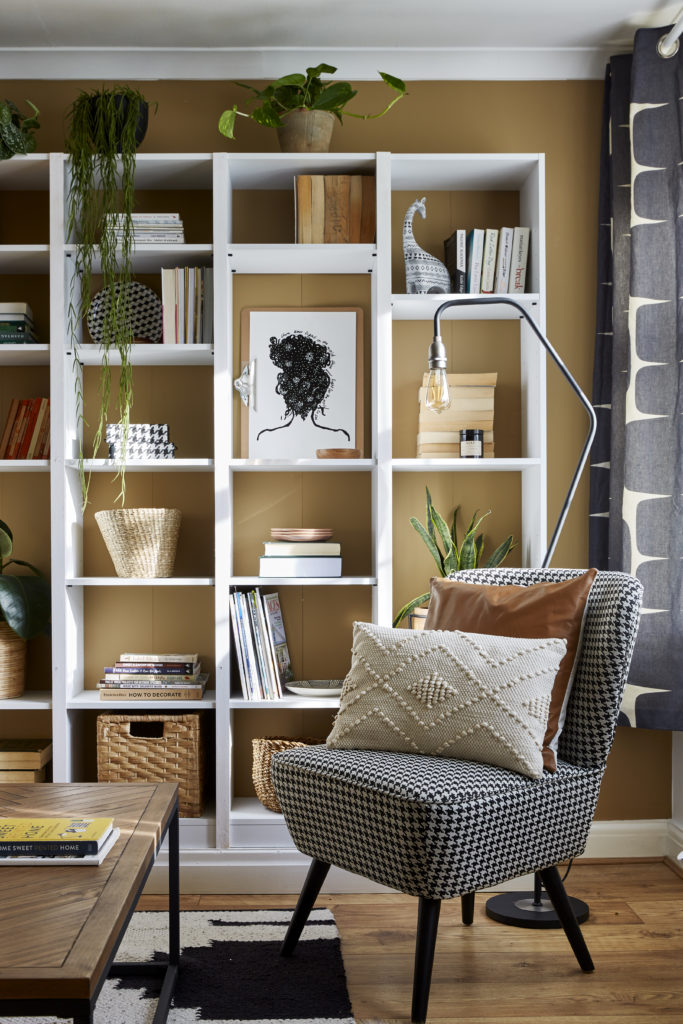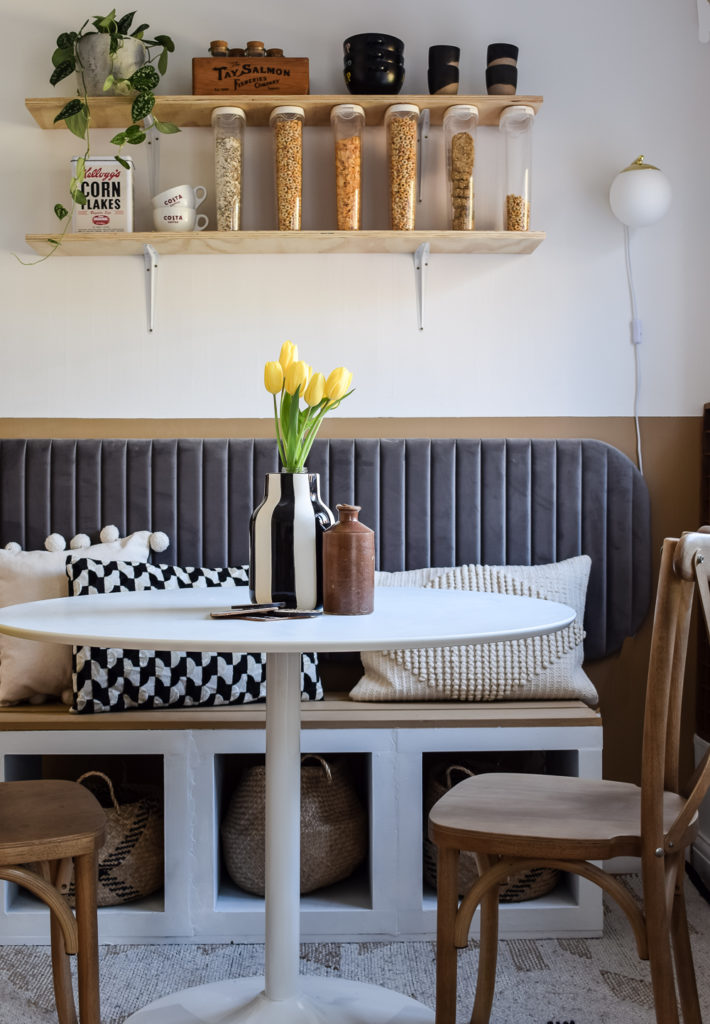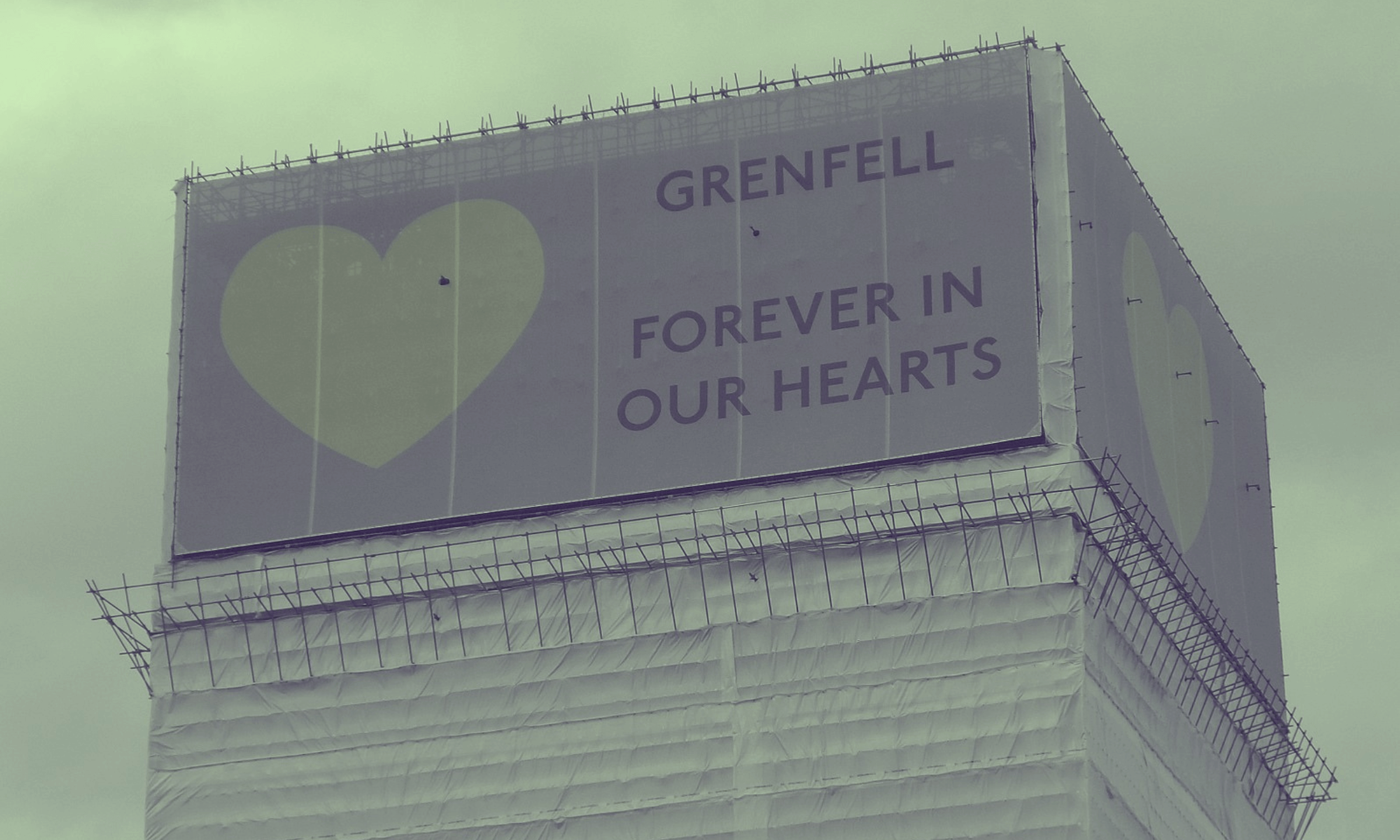
Photography courtesy of Africa Daley-Clarke, Medina Grillo, Salsabil El-Awaisi
Home-ownership is overrated: here’s how to bring interior goals to rented homes
Not buying a house? Salsabil El-Awaisi, Medina Grillo and Africa Daley-Clarke are the interior inspos you need.
Niellah Arboine
29 Apr 2020
The housing market in the UK is nothing short of shambolic. The average deposit is around £33,000, going up to £114,952 in London, and it takes around 25 years to pay off a mortgage. In the area I grew up in, you either lived in social housing, or your parents owned three properties and a boat. I was the former, living in a social housing flat, and renting since moving out – and I’m not alone. Black people are less likely to own a home in the UK compared to white people, with only 20% of black Africans being homeowners. Housing has historically been undercut with racism and classism.
Our time in rented accommodation can often seem fleeting, but really, and especially during lockdown, we should all be able to find sanctuary there. It doesn’t have to be a one-stop-shop for food and sleep on your way to something better – you can truly cherish where you are and surround yourself with interiors that make you feel all nice and cosy. Thankfully, there are women of colour shaking up the white world of interiors, who are proving that you don’t have to buy a house to have a home. Now more than ever, social media has given us access to people opening their homes and getting honest about their housing and their work feels especially important right now.
Rethinking renting
Medina Grillo, who runs the video series How I Rent, and blog Grillo Designs, wants to dispel some of the stigma attached to renting by helping people to reimagine their living spaces whether they “own” them or not. Medina, who lives in a rented property with her husband and son in Birmingham, has rented most of her life and her current home manages to be both modern yet still the kind of place you could easily kick back and relax in. The walls are lined with graphic prints and a striped and wooden theme laced throughout.
She travelled around the Middle East as a child for her father’s work as an electrical engineer , so renting always seemed like the more viable option, bringing with it the freedom of moving and changing areas. For some Muslims who can’t pay interest and therefore can’t use traditional loans, Islamic mortgages are used. These can be more expensive, meaning they are not always a viable option for those keen on buying property.
Seeing colleagues of a similar age climbing the property ladder lead Medina to initially start saving for a property. “I thought in order to be successful I needed to have a home,” she says. While saving she soon realised that she and her family weren’t making the most of their surroundings. “[I asked myself:] why am I struggling so hard to save for a deposit when I’m not actually enjoying my life right now? I should be creating a home that my son will remember in years to come and enjoy,” she says. Now, she makes the most of her home. “I just stopped actively saving and in a way, it meant that we were enjoying our lives.”
Salsabil El-Awaisi, an interior designer from Edinburgh, who lives in a gorgeous rented property with her husband and child, echoes Medina’s musings. “When I grew up, everyone was always asking me ‘when am I going to buy my own place? You’re only successful once you have your own place’,” she says. “Now things are slowly changing, people are embracing renting.” With Edinburgh being more expensive than the rest of Scotland, and two-bedroom houses going for £250,000, Salsabil explains, “I don’t think we’ll be buying anytime soon, we love the area we live in.”

Salsabil’s home
Phography by Rachel Cohen
Salsabil’s home
Photography of Rachel Cohen
Representation in interior design
A 2017 study showed the design industry was 90% white and 60% men. The need for representation and diversity in the field is something Medina has spoken out about, often being disheartened at being the only black person at events.
“Lots of people don’t understand why there needs to be representation,” she tells me. “There could be a girl who looks just like me who wants to get into the interior design community, but if she’s constantly seeing people who don’t look like her, that won’t encourage her to try this industry herself.” When she first started her blog back in 2015, Medina was initially apprehensive to show her face, but now she’s become a role model. “I know there are loads of hijabi women and black women who message me saying ‘thank you so much for putting your face out there’”.
Salsabil who lives in Edinburgh, which is majority white – says although people in her area are friendly, open and accepting – there is an obvious lack of people of colour in her industry. She is the only Muslim woman working in interior design in her area that she knows of, and similarly to Medina, “I’m always the only person in the room and at events.”
Personal style in social housing
Africa Daley-Clarke set up her platform The Vitamin D Project as a way to “talk openly and frankly” about her experiences with postnatal depression. Since then, The Vitamin D Project has also become a photo diary, which she uses to “challenge how the media typically portrays young, black families”. Her images are often of her two adorable daughters with big bouncy fros, dressed in knitted-wear, reading, playing and just being kids.
“I’ve lived in social housing for as long as I can remember,” Africa tells me. She explains that her earliest memories were in a hostel, then when she left home, she went into temporary accommodation. She was on the waiting list for seven years and was eventually allocated to a nearby Housing Association.
One of the pros of social housing, Africa notes, is that (with permission) once you’ve passed your starter tenancy, you have the freedom to make almost any changes to your home. She is a “firm believer in carving out your own personal style”, and you can tell. Living with her husband and two children, their home is beautiful, with unique furniture, a giant banana tree in the living room and a colour-coordinated display of black-authored books for their children. She says her favourite item is the vintage theatre chairs which she’s saving up to have reupholstered.
For those not sure how to get into social housing, simply check the requirements with your local council. “Be prepared to provide a backlog of documents,” Africa notes, “be vigilant, chase up your status regularly and once you have access, bid on properties regularly, even if you don’t feel like you have enough points.” And be expected to wait for a while. A report by Shelter in 2018, showed that 27% of those waiting for social housing had been doing so for more than five years some waiting as long as 10 years. So, if you can’t wait and it isn’t your only viable option, it might be beneficial to try a different route.
Housing has historically been undercut with racism and classism. In the 80s black and Asian housing associations thrived as a way to remedy this in the face of rampant discrimination. Caribbeans in the UK started pardners, a co-operative technique of saving money in rotation. But instead of the resurgence of these housing associations, Africa believes “we desperately need reform” and “to see a bigger drive from an early age in educating our children to avoid the pitfalls we did. Generational wealth is real and it’s a curse,” she explains, “but I also believe that bad cycles can be broken.”
Be savvy, smart and sustainable
When it comes to advice on sprucing up your rented accommodation, all three suggest using Pinterest to plan things out, but Africa advises against following current trends. “It’s one of the least sustainable things you can do,” she says. She points out that “trends have a limited shelf life and you will find yourself very quickly wanting the new next-best-thing”. Finding your own style and knowing “exactly what it is that you want to come home to… Not just what you want to share for the gram, sourcing pieces the old fashion way is half the enjoyment,” Africa explains.
For Medina, quality is key. “Invest in good quality pieces that are unique and will stand the test of time,” she says. “A lot of people think because you rent, you need to buy cheap.” If you invest and buy with intention, the pieces will go where you do, she explains. One of Medina’s favourite items is her yellow velvet sofa, which complements the yellow motif dotted throughout her home. Because she’s invested in something she really loves, it will go with her.

Medina’s home
Photography by KASIA FISZER
Medina’s home
Courtesy of Medina Grillo
Salsabil says to spruce up your home, use plants and art, she has a gorgeous tapestry in her living room, highlighting her high walls. And don’t underestimate soft furnishings like rugs and cushions, Medina suggests hanging rugs or scarves on the walls (with removable Command strips) as well as prints. You can also hang items like rugs or scarves, wallpaper that is removable or even wall stickers.
IKEA is the world’s biggest furniture retailer and it’s easy to see why – it’s affordable, stylish and flat-pack – although it’s common in many homes, that doesn’t have to be a bad thing. “I love that IKEA has such long-lasting, classic designs. It makes upcycling them a lot easier,” Africa says. “I often find myself searching #IKEAhack for inspiration.” There are plenty of ways to make sure you don’t have a generic IKEA home. “If you are going to go with IKEA because you have to, give it a splash of paint,” Salsabil suggests. “It looks more expensive and more custom.”
Work hard, get a good job and buy a house – those seem to be the steps most of us have been taught in life. Well, we know that meritocracy is a giant myth, so perhaps purchasing a house isn’t the realistic be-all and end-all of life goals. Their outlook begs the question, why do we need to buy houses then? Could our money be used more wisely, especially while the housing market is expensive? And on a deeper level, should we even be striving to own houses or “own” land and property in the first place? Does it benefit our communities to try and grab more resources than we need? But whether you’re nomadic by nature and don’t want to be anywhere permanently, realistically won’t ever be able to afford a house, or simply want to feel more comfortable where you are – it’s important to remember that your housing situation isn’t a reflection of your worth.







